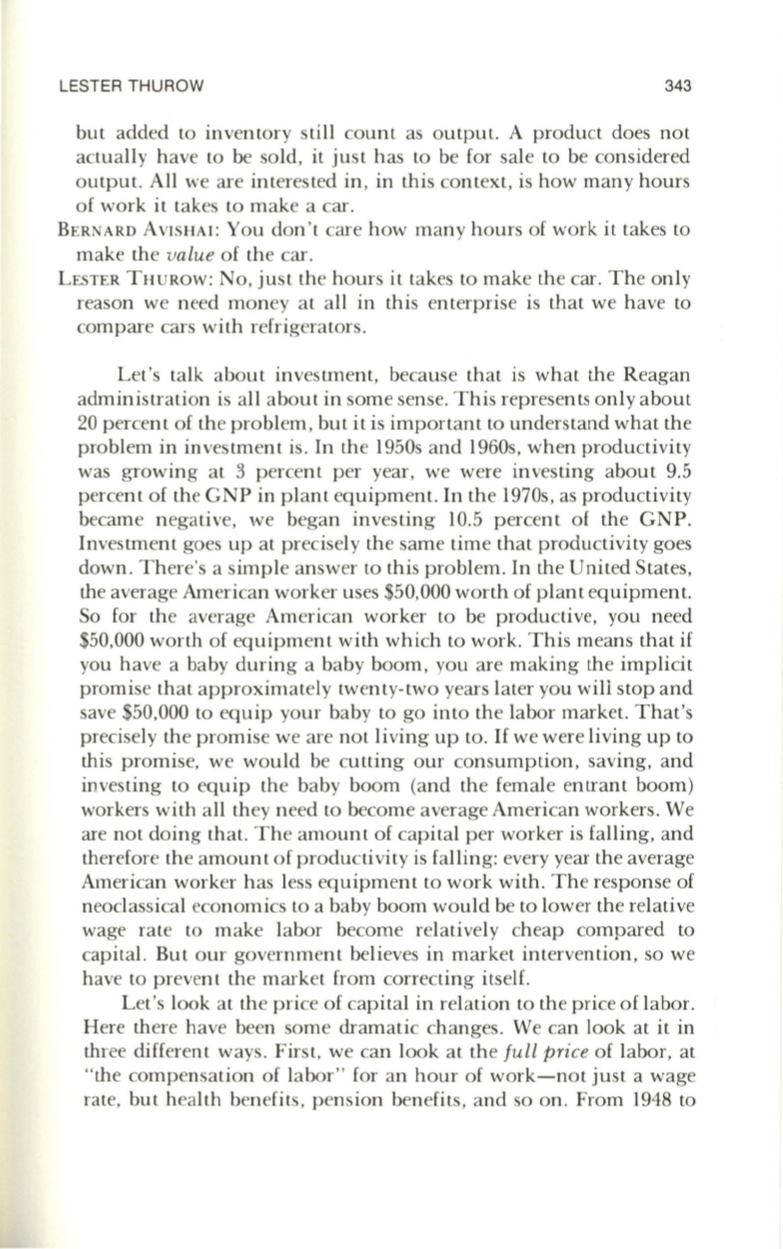
LESTER THUROW
343
but added
to
inventory still count as output. A product does not
actually have
to
be sold, it just has to be for sale
to
be considered
output. All we are interested in, in this context, is how many hours
of work it takes
to
make a car.
BERNARD AVISHAI : You don't care how many hours of work it takes to
make the
va lue
of the car.
LESTER THUROW: No, just the hours it takes to make the car. The only
reason we need money a t all in this enterprise is that we have
to
compare cars with refrigerators.
Let's talk about investment, because that is what the Reagan
administration is all about in some sense. This represents only about
20 percent of the problem, but it is important to understand what the
problem in investment is. In the 1950s and 1960s, when productivity
was growing at 3 percent per year, we were investing about 9.5
percent of the GNP in plant equipment. In the 1970s, as productivity
became negative, we began investing 10.5 percent of the GNP.
Investment goes up at prec isely the same time that productivity goes
down. There 's a simple answer to this problem. In the United States,
the average American worker uses $50,000 worth of plant equipment.
So for the average American worker
to
be productive, you need
$50,000 worth of equipment with which to work. This means that if
you have a baby during a baby boom, you are making the implicit
promise that approximately twenty-two years later you will stop and
save $50,000 to equip your baby to go into the labor market. That's
precisely the promise we are not living up to.
If
we were living up
to
this promise, we would be cutting our consumption, saving, and
investing
to
equip the baby boom (and the female entrant boom)
workers with all they need to become average American workers. We
are not doing that. The amount of capital per worker is falling, and
therefore the amount of productivity is falling: every year the average
American worker has less equipment to work with. The response of
neoclassical economics
to
a baby boom would be to lower the relative
wage rate to make labor become relatively cheap compared to
capital. But our government believes in market intervention, so we
have to prevent the market from correcting itself.
Let's look at the price of capital in relation to the price of labor.
Here there have been some dramatic changes. We can look at it in
three different ways. First, we can look at the
full price
of labor, at
" the compensation of labor" for an hour of work-not just a wage
rate, but health benefits, pension benefits, and so on. From 1948 to


